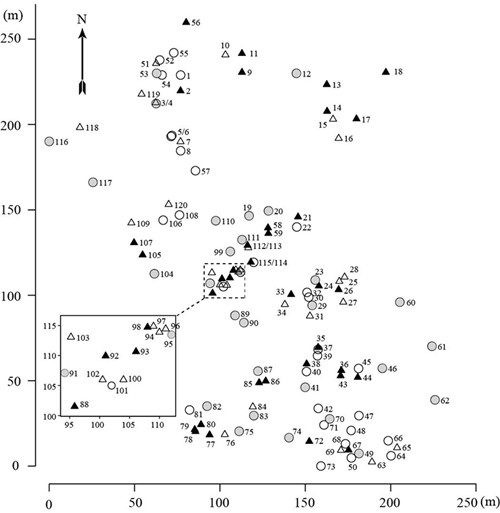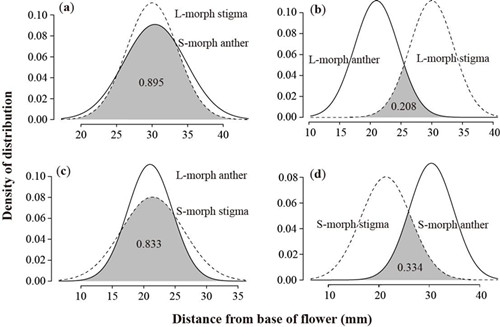Heterostyly is a conspicuous floral polymorphism in which non-random mating is usually enforced by a strong diallelic self-incompatibility system that ensures intermorph mating by preventing self and intramorph mating. Populations of heterostylous species contain either two (distyly) or three (tristyly) floral morphs that differ reciprocally in the relative positions of stigmas and anthers, a condition known as reciprocal herkogamy. Darwin (1877) proposed that heterostyly is a floral mechanism that promotes pollinator-mediated cross-pollination between floral morphs.
Recently, the research group led by Prof. LI Dezhu and Prof. WANG Hong from Kunming Institute of Botany ,cooperating with Prof. Spencer Barrett from University of Toronto, performed a comprehensive analysis of mating patterns in distylous Luculia pinceana, a species with intramorph compatibility. Both potential and realized mating patterns indicated a significant component of disassortative mating, satisfying theoretical conditions for the maintenance of floral dimorphism. Levels of assortative mating (37.7%) were significantly lower than disassortative mating (62.3%), but numerous offspring resulting from intramorph mating were detected in the majority of maternal seed families in both floral morphs. This results provide empirical support for Darwin’s cross-promotion hypothesis on the function of reciprocal herkogamy, but indicate that in most heterostylous species strong diallelic incompatibility may be a general requirement for complete disassortative mating.
This manuscript entitled “Reciprocal herkogamy promotes disassortative mating in a distylous species with intramorph compatibility” was published on New phytologist. The paper link: http://onlinelibrary.wiley.com/doi/10.1111/nph.13326/abstract.
This work was financially supported by the National Key Basic Research Program of China (2014CB954100), the National Natural Science Foundation of China (31320103919) and the Key Research Program of the Chinese Academic of Sciences (KJZD-EW-L07), the National Natural Science Foundation of China (31200289) and the Natural Science Foundation of Yunnan Province (2012FB182) .

Spatial location of the 120 Luculia pinceana adult individuals in the population studied. Triangles, L- morph (n = 62); circles, S-morph (n = 58); filled triangles and circles represent maternal parents used for paternity analysis (35, 56.4% L-morph and 30, 51.7% S-morph. The inserted box shows an area of high density.

The spatial distribution and overlap of sexual organs in the floral morphs of Luculia pinceana. The solid line and dotted line indicated normal fitted density distributions of anthers and stigmas, respectively. The gray area indicates the proportion of overlap between female and male sexual organs. (a) stigmas of the L-morph and anthers of the S-morph; (b) stigmas and anthers of the L-morph;(c) stigmas of the S-morph and anthers of L-morph; (d) stigmas and anthers of the S-morph.




